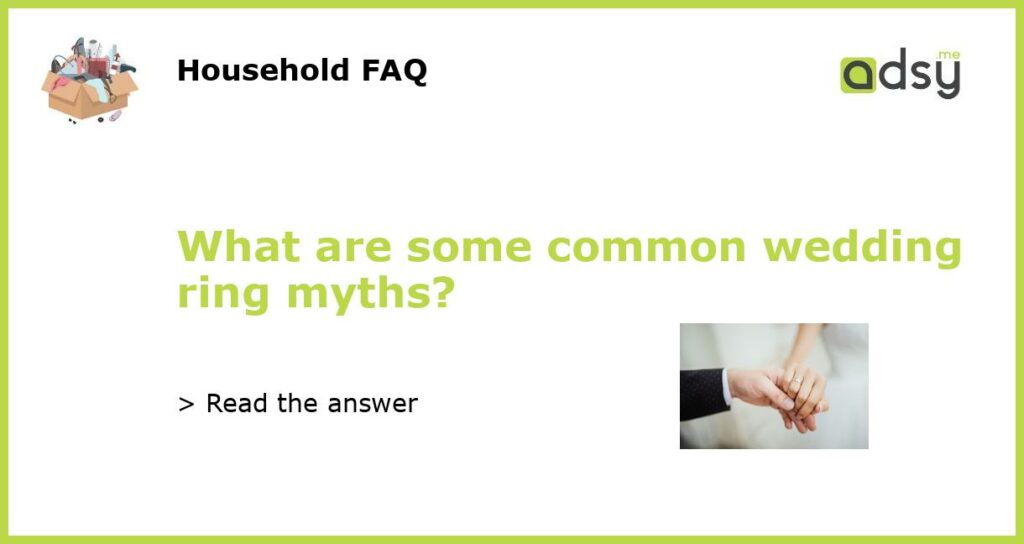Wedding Ring Myths: Debunking Common Misconceptions
Wedding rings hold significant meaning in the lives of many couples, symbolizing eternal love and commitment. However, over time, various myths and misconceptions have emerged around these precious bands. It’s important to separate fact from fiction to make informed decisions when choosing the perfect ring for your special day. In this article, we will debunk some common wedding ring myths.
The Bigger, the Better
One prevailing myth when it comes to wedding rings is the belief that size matters. Many people assume that a larger diamond or gemstone equates to greater love or commitment. However, the truth is that the size of the ring has no bearing on the strength or longevity of a marriage. The value of a wedding ring lies in the sentiment behind it, not its physical appearance. Couples should focus on selecting a ring that holds meaning for them, whether it’s a simple gold band or an intricately designed piece.
Wedding Rings Must Cost Three Months’ Salary
Another popular myth perpetuated by the diamond industry is the notion that a wedding ring should cost three months’ salary. This marketing ploy has convinced many that the more expensive the ring, the more love and commitment it represents. However, this is simply a fabrication designed to drive up sales. The idea that couples should spend a specific percentage of their income on a ring is unnecessary and can place undue financial strain on the relationship. The most important aspect is choosing a ring that fits within your budget and aligns with your personal style and taste.
A Diamond is Essential
For decades, the diamond engagement ring has been revered as the ultimate symbol of love and commitment. While diamonds are undeniably beautiful and precious, they are by no means necessary for a wedding ring. This myth has led many to feel pressured into purchasing a diamond, despite their preference for other gemstones or materials. The truth is that there are numerous alternatives available that can be just as meaningful and stunning. From colorful gemstones to unique metal designs, couples have the freedom to choose what resonates with them personally.
Wedding Rings Should Be Worn on the Fourth Finger
One of the most widely believed myths surrounding wedding rings is that they should be worn on the fourth finger of the left hand. This myth has its origins in ancient Roman and Egyptian cultures that believed a vein ran directly from this finger to the heart, signifying a direct connection between love and the ring. While this may be a romantic notion, the reality is that there is no physiological difference between the fingers that would impact the symbolism of a wedding ring. Couples are free to wear their rings on any finger or hand that feels right to them.
Wedding ring myths can sometimes cloud our judgment when it comes to selecting the perfect symbol of love and commitment. By debunking these common misconceptions, couples can make more informed decisions and prioritize what truly matters to them. Whether it’s the size, cost, type of gemstone, or finger on which the ring is worn, the most important factor is the love and intention behind the choice. Let these myths be left behind as you embark on the journey of finding the perfect wedding ring that resonates with you and your partner.






